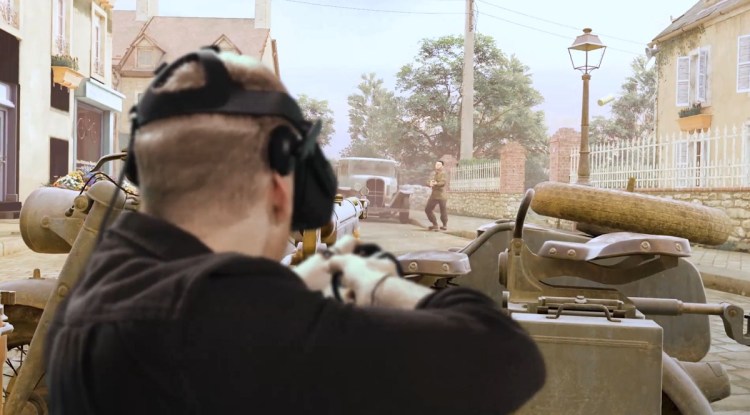Oculus and Respawn Entertainment have finally revealed their secret project as Medal of Honor: Above and Beyond, a big-budget virtual reality game coming in 2020 for the Oculus Rift and Rift S VR headsets.
The first-person shooter game revealed today at Oculus Connect 6 in San Jose, California, is perhaps the biggest effort underway to prove the fledgling interactive medium of VR, with more than 180 people working on it for as much as three years. The game is highly anticipated in part because it comes from the respected studio Respawn, maker of Apex Legends and Titanfall, and it is the first installment in the Medal of Honor series since 2012’s Medal of Honor: Warfighter.
I played a preview of the Word War II game for an hour or so, and it was a sweaty affair. Playing in VR is a lot different from sitting on a couch with a controller. It’s more of a physical game, said Peter Hirschmann, Above and Beyond’s director, in a press interview. The game will have 50 levels in single-player mode and it will also have multiplayer (to be described later).
“With Medal of Honor: Above and Beyond, I think we’re finally able to, to fully realize that vision from 20 years ago with putting you in the boots and allowing you to see through the eyes of someone who was actually there,” Hirschmann said. “And that’s been the most exciting and fulfilling part of the project.”
June 5th: The AI Audit in NYC
Join us next week in NYC to engage with top executive leaders, delving into strategies for auditing AI models to ensure fairness, optimal performance, and ethical compliance across diverse organizations. Secure your attendance for this exclusive invite-only event.

Above: Michael Doren of Oculus and Peter Hirschmann of Respawn Entertainment.
You can catch a grenade thrown by a Nazi soldier, but you do so by putting your hand in the air and clicking on a button on a motion controller. And you can look around a corner by moving your body and peeking around it. If you want to load your gun, you grab for a cartridge on your belt with your hand and then click it into place in the gun being held in the other hand.
“This is all about analog warfare,” he said. “Bullets and health really matter. The adrenaline kicks in and you have to make some very serious decisions in the moment. It’s up close and personal. We certainly have moments of spectacle in the game. But when you can see the faces of the enemy and the insignia of their uniforms, that’s where VR really pays off.”
Hirschmann said the project started nearly three years ago, when Respawn was still an independent company and was talking with partner Electronic Arts (which eventually bought the studio) about working on a Medal of Honor game. Many of Respawn’s people, like CEO Vince Zampella, had worked on the original Medal of Honor two decades earlier.
The team began the work, but it also got a pitch from Michael Doran, a producer at Oculus, about making a VR game. The Respawn team liked that idea so much that they decided to work on Medal of Honor: Above and Beyond, a VR title. The partners announced the title two years ago at OC4.
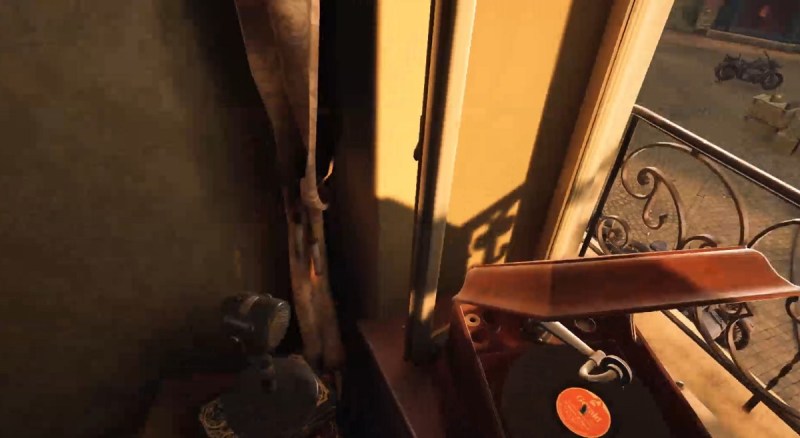
Above: Medal of Honor: Above and Beyond
In the game, you play an operative in the Office of Strategic Services, the WWII forerunner of the Central Intelligence Agency. As such, you can travel to a lot of different hot spots in the war, from the German heavy water research facility in Norway to a French Resistance operation in Paris. You get to take part in the Omaha Beach landings and the biggest moments of the war.
The game is mostly about action, without a moment to relax in the middle of various war zones. It starts in a village in occupied France, where the Resistance plays records to send coded messages. I donned the headset and hand controllers and dove in.
I had to move around by moving the thumbstick. You won’t see any teleporting in the game, as the team found that accelerating the graphics to 90 hertz helped with motion sickness. Instead of climbing stairs, however, you just go up to the stairway and the scene shifts to the next floor.
I searched for documents and picked them up with my hand, pulling a trigger or pushing a button to make it happen. I then went to a window, picked up a record, put it in the phonograph, picked up a gun and started shooting at the Nazis outside the window.
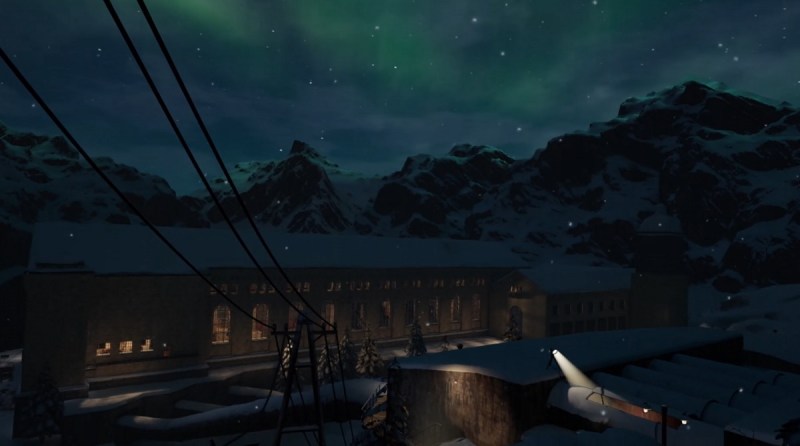
Above: Medal of Honor: Above and Beyond
The shooting with the motion vibration in the controllers felt pretty good, but it took some time to get used to the reloading process. That took a lot longer than it did in a normal video game, so it left me exposed and not moving out in the open sometimes. That made me a target, and the enemies would take me out.
So that taught me to seek out cover, especially when I was reloading. But I could also more easily fight by peeking around the corners. I could also do blind fire by holding my arm up high and twisting my wrist so that I could fire over barriers, albeit with less accurate aim. Sometimes, when I popped my head over the barrier, I would see a body and realize the blind fire did the job.
Hirschmann said that players will be able to discover this level of immersion and possibilities for unexpected gameplay over time. The combat is like other Medal of Honor games in that it is about moment-to-moment encounters, with you pitted in a tactical situation against a single or multiple enemies who are in close quarters with you.
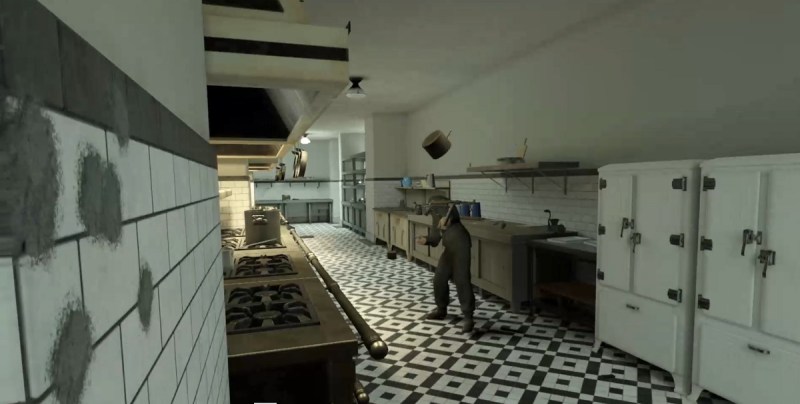
Above: Yes, you can throw a pot at a Nazi in Medal of Honor: Above and Beyond.
And it’s pretty well done. With force-feedback in your hands, the guns feel realistic when they’re blazing. I played another level where I had to clear an ornate French palace full of Nazis, room by room, in the middle of Paris. From the kitchens to the commander’s office, I had to fight every step of the way there.
The goal was to get to a safe, find a list of Resistance members that the Nazis captured, and burn it. When I finally got there, I had to go through the motions of striking a lighter and setting the paper on fire. A cute touch: My name was on the list.
Is it too real?
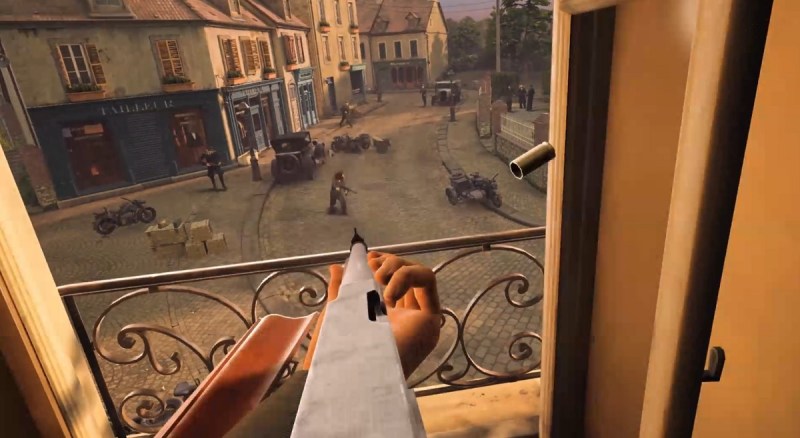
Above: The opening mission of Medal of Honor: Above and Beyond. You are in the French Resistance.
Some people have expressed the fear that shooting games in VR would seem too realistic and frightening to play, a la the old stereotype that games would become “murder simulators.” I didn’t feel that was the case. In part, the physics of the game felt a bit antiquated or exaggerated.
If you tossed a grenade at a Nazi, it would explode and send the body flying in the air, as if they were shot out of a cannon. That deflated the sense of realism. And while you see blood and some tense combat like knifing enemies, it didn’t seem excessively grisly. On top of that, the enemies were Nazis. They weren’t civilians, and you are mostly firing in self-defense.
The tone of the game is respectful, and the violence doesn’t seem over-the-top or needlessly celebratory. You see just enough violence and intensity to give you a real sense of the gravity of combat and the need for action. The graphics are not like Battlefield V. It’s a bit more cartoony than that, if that’s a word.
360-degree VR veteran videos

Above: Oculus and Respawn interviewed veterans like Frank for Medal of Honor: Above and Beyond’s bonus content.
Some things that lent authenticity to the game were the bonus VR videos that you get once you reach a certain threshold of completion. The team connected with WWII veterans, including some who landed on D-Day in Normandy. A nonprofit dubbed Honor Flight, which flies veterans back to the combat zones, helped make the connections.
One of the veterans, Frank, now in his 90s, traveled with the Respawn team to the 82nd Airborne Division’s paratrooper landing zones. He found the exact field in France where his glider crash-landed in 1944. And the veteran had a tearful reunion with a French farmer who had been forced to bury the dead Americans in the field. Eventually, locals buried 6,000 bodies in the makeshift cemetery. That was really moving, and it did more to establish the game’s authentic feel.
Living up to a legacy
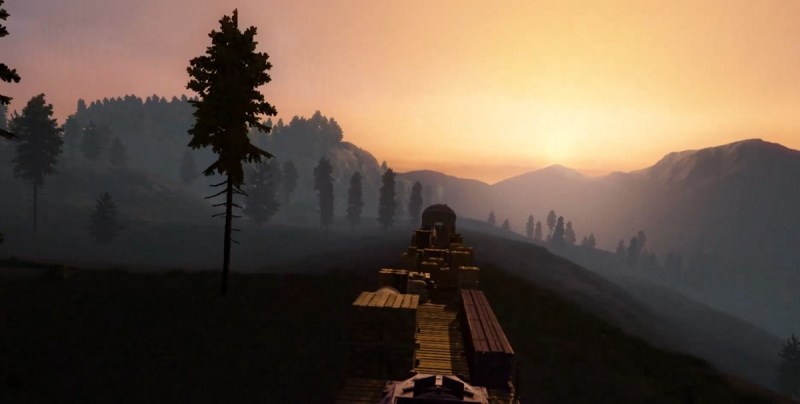
Above: You play an OSS operative in Medal of Honor: Above and Beyond.
While that is no doubt a part of the marketing of a World War II game (we’ve seen so many of them by now), Hirschmann is right about one thing. And that is the modern video game has become the way that people learn about their history. Steven Spielberg’s Saving Private Ryan delivered the shock of realism to a generation that did not remember the way. But that film came out way back in 1997.
Now it’s the responsibility of the game makers, not the filmmakers, to deliver the knowledge and learning of history in a memorable way. In one way, the game also tells a more complete version of history, as it has female soldiers, particularly in the French Resistance, and other people of color represented in a way that we have not seen before.
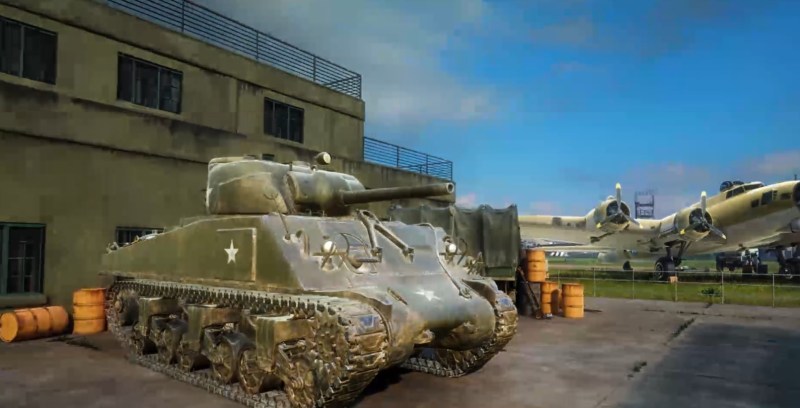
Above: You will feel what it’s like to be in a Sherman tank in Medal of Honor: Above and Beyond.
To educate a new generation about World War II is a heavy burden for a game that is all about fun. When fun and history collide in such a game, fun wins out, Hirschmann said. But it will be good to see this game come out and make an impression on young people who don’t know the sacrifices made by an older generation.
The game could use some improvements. I think it will be good and more polished by the time in comes out in 2020. It will have some of the drawbacks of VR, such as animations that are good but not necessarily as good as the best high-end PC games. The headset will get hot and sweaty if you play for a long time. And the physics and animations may not seem as realistic.
But I have no doubt the immersion of VR will be able to make up for a lot of that. The market will decide. But it is gratifying that a couple of the biggest names in gaming are collaborating on this project with the hope of moving VR closer to a mass market.
